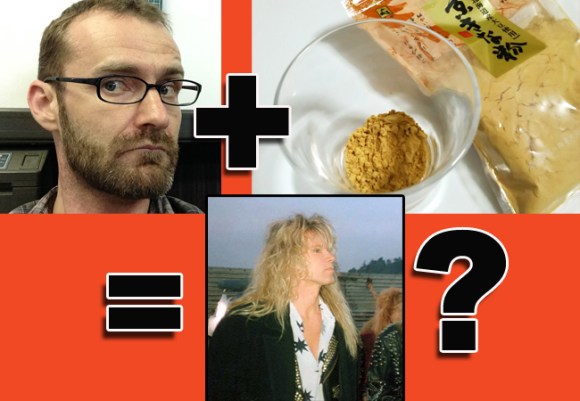
We investigate the widespread rumor that Japan’s beloved sweet and savory soy bean powder kinako actually has the ability to restore hair.
■ Ki-nockin’ on hair-growth’s door
▼ “I drank it in non-adjusted soy milk for two weeks and my hairline has revived with amazing speed!”
2週間無調整豆乳に入れて飲んだら、生え際が驚くべきスピードで復活した!
— ぱんぷきん (@pumpkin_999) June 1, 2016
ムソー 国内産有機きな粉 120g https://t.co/dil17j63qd
These are some of the testimonies of people who claimed to have had their male-pattern baldness slowed, halted, or reversed by eating kinako: a flour made from roasted and peeled soy beans. Kinako is a really nice little seasoning that interestingly tastes both sweet and savory and can even make raw daikon taste good.
▼ “I began eating kinako every day for two weeks. I can feel the power of my hair coming back. Kinako is cheap for balding.”
きな粉毎日食べ始めて2週間。髪の毛に力が戻ってきた感じ。安いし、ハゲにはきな粉
— Liberi™ (@liberico2222) March 13, 2016
But the notion that it can actually grow hair seems a little far-fetched. I mean, if it could truly do what some people claim, it would surely be instantly marketed as such and raking in the yen. Then again, Japanese men by and large seem able to hang onto a full head of hair well into their twilight years. Could it be a result of some untapped force in kinako?
▼ “I put kinako, milk, and black honey into a shaker and drink three times a day. My hair loss has decreased.”
シェイカーにきな粉ドバっと入れたのに黒蜜と牛乳混ぜたものを1日3回飲んでたら、抜け毛が減った
— ぱんぷきん (@pumpkin_999) May 31, 2016
真誠 とろけるきなこ 80g×4個 https://t.co/bbxD09NrRa
Hair professionals interviewed by Japanese website Netallica seem to concur. Dietitian Takako Nakagawa told them that “kinako contains many vitamins and minerals – zinc in particular – which are essential to hair growth.” They also asked hair consultant Eiko Matsumoto who said that kinako isoflavones “act in a similar way to estrogen, which reduces dihydrotestosterone (DHT) and its androgenic hormones that cause male pattern baldness.
■ Put to the test
I have to admit, a lot of that went over my C-plus-in-biology head, and a quick Wikipedia scan reveals that Nakagawa and Matsumoto’s claims haven’t been scientifically proven. Still, I choose to believe them because…What else have I got?
So, I decided to donate my scalp to science and undertake a kinako diet in the hopes that it rejuvenates my thinning hair. Luckily, I’m a pretty good candidate fairly early into the hair-loss game and not yet past the point of no return.
■ Oolong tea too!
However, just before getting started I came across another bit of news. Hair growth product manufacturer Reve21 announced they are conducting research on oolong tea because it inhibits 5α-reductase, which is said to cause thinning hair.
So it was settled. Every day I was to have a nice glass of oolong tea and a tablespoon of kinako as recommended by Nakagawa. The kinako was mixed in with milk to make it easier to swallow. They recommend using warm milk for smoother mixing, but since I’m not Princess Perrywinkle of Pixieland I would make do with the lumpy cold mix.
Thankfully, both the tea and kinako milk were pretty good tasting. The kinako milk was reminiscent of chocolate milk but with a hint of nuttiness. Also, perhaps I was just imagining things, but I swore I could feel my scalp tingle after drinking them the first few times.
■ One month later…
For an accurate comparison, I got a haircut both before and after the kinako/oolong diet. This also gave me a chance to consult my loyal barber at the discount hair-cutter for an expert opinion. I’ve been going to him ever since he gave me free eggs from the supermarket the hair salon was annexed to.
Surely, no one would have a more intimate knowledge of my hair than he, so I asked:
Me: “Say, do you notice anything different since last time I got a haircut?”
Barber: “Like what?”
Me: “I dunno…like the color… Is there more or less? Anything?”
Barber: “No, it’s the same. You’re the same guy right?”
Me: “Yeah, I guess so…”
Barber: “We don’t have any eggs today.”
Me: “I see.”
And so concluded my experiment as well as my relationship with that particular discount hair place.
■ Results
Without further ado, here are the before and after images of my hairline.
Going by these photos, it certainly appears that kinako and oolong tea did a big load of nothing with regards to hair growth. Granted, I only did it for one month and the possibility remains that longer use would show some effects, but some online testimonials said that it took only two weeks before improvements appeared.
Still, as far as hair treatments go, it’s rather enjoyable, cheap, and probably healthy in other regards. So, if you’re really desperate and willing to try anything, it probably wouldn’t hurt to give it a go. Otherwise, you can just wait the two years for Shiseido’s stem cell treatment to go on the market.
Source: Netallica, Kyodo News (Japanese)
Photos: RocketNews24
Adrian Vandenberg Photo: Wikipedia/Cathy Griffiths

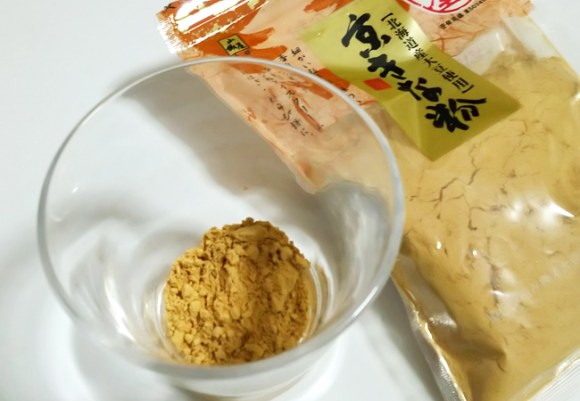

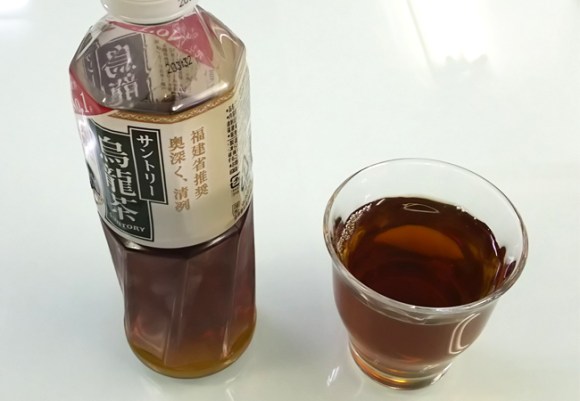
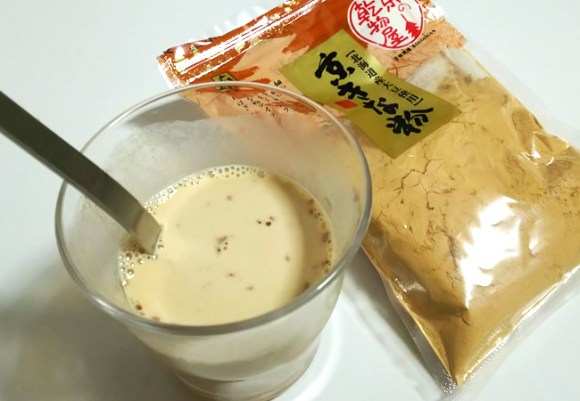
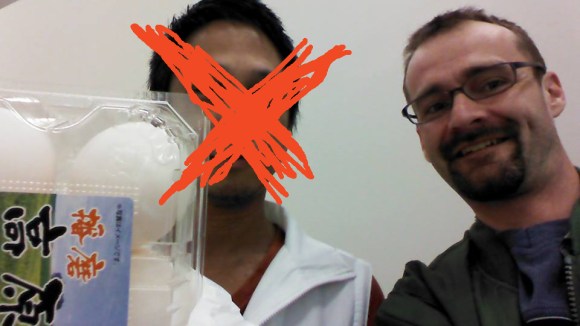
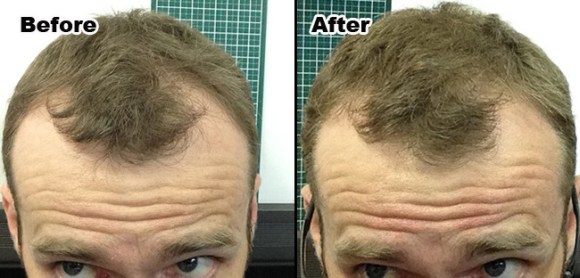
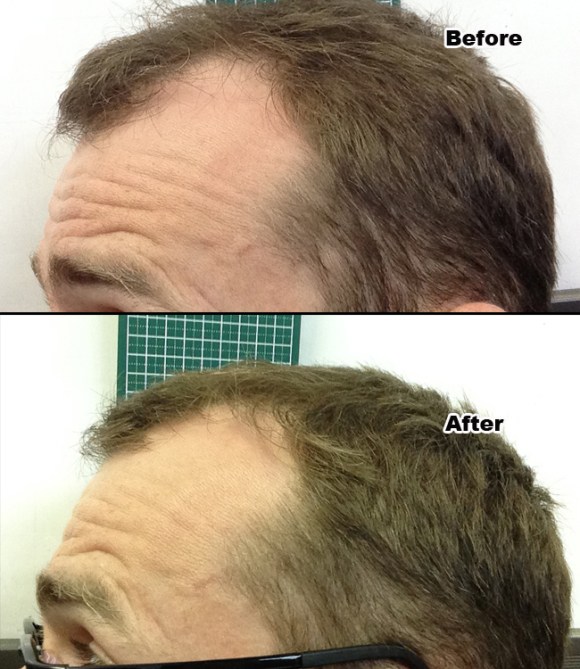
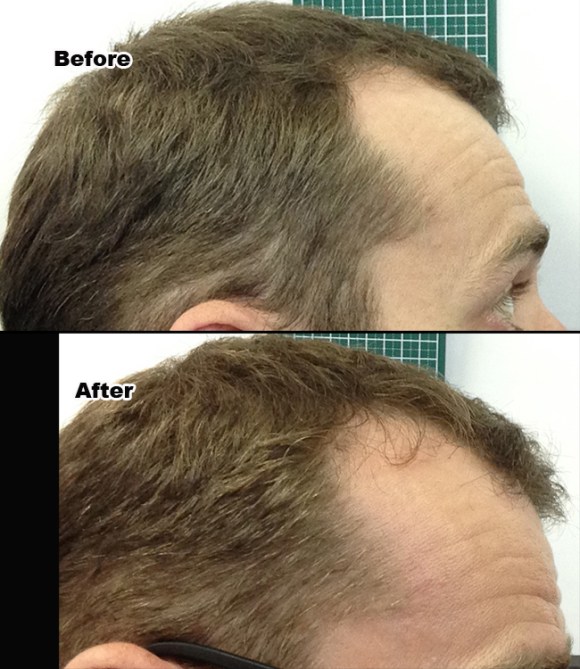
 Snuggly ferret makes adorably comfy beds from random household objects, especially loves socks
Snuggly ferret makes adorably comfy beds from random household objects, especially loves socks Cute kitty completely “mistified” by vapor released from humidifier【Video】
Cute kitty completely “mistified” by vapor released from humidifier【Video】 Häagen-Dazs Japan comes out with sticky-sweet new line of ice cream containing … mochi!
Häagen-Dazs Japan comes out with sticky-sweet new line of ice cream containing … mochi! “Glossy green tea donuts” sound weird, look amazing in Mr. Donut team-up with Kyoto matcha master
“Glossy green tea donuts” sound weird, look amazing in Mr. Donut team-up with Kyoto matcha master Häagen-Dazs Japan’s delicious mochi ice cream makes a comeback this fall
Häagen-Dazs Japan’s delicious mochi ice cream makes a comeback this fall Foreigner’s request for help in Tokyo makes us sad for the state of society
Foreigner’s request for help in Tokyo makes us sad for the state of society Japanese city loses residents’ personal data, which was on paper being transported on a windy day
Japanese city loses residents’ personal data, which was on paper being transported on a windy day Akihabara pop-up shop sells goods made by Japanese prison inmates
Akihabara pop-up shop sells goods made by Japanese prison inmates Ghibli Park now selling “Grilled Frogs” from food cart in Valley of Witches
Ghibli Park now selling “Grilled Frogs” from food cart in Valley of Witches Historical figures get manga makeovers from artists of Spy x Family, My Hero Academia and more
Historical figures get manga makeovers from artists of Spy x Family, My Hero Academia and more Tokyo Tsukiji fish market site to be redeveloped with 50,000-seat stadium, hotel, shopping center
Tokyo Tsukiji fish market site to be redeveloped with 50,000-seat stadium, hotel, shopping center Beautiful Ghibli sealing wax kits let you create accessories and elegant letter decorations【Pics】
Beautiful Ghibli sealing wax kits let you create accessories and elegant letter decorations【Pics】 Harajuku Station’s beautiful old wooden building is set to return, with a new complex around it
Harajuku Station’s beautiful old wooden building is set to return, with a new complex around it Anime girl English teacher Ellen-sensei becomes VTuber/VVTUber and NFT
Anime girl English teacher Ellen-sensei becomes VTuber/VVTUber and NFT We tried Korea’s way-too-big King Tonkatsu Burger at Lotteria 【Taste Test】
We tried Korea’s way-too-big King Tonkatsu Burger at Lotteria 【Taste Test】 McDonald’s new Happy Meals offer up cute and practical Sanrio lifestyle goods
McDonald’s new Happy Meals offer up cute and practical Sanrio lifestyle goods Japanese ramen restaurants under pressure from new yen banknotes
Japanese ramen restaurants under pressure from new yen banknotes French Fries Bread in Tokyo’s Shibuya becomes a hit on social media
French Fries Bread in Tokyo’s Shibuya becomes a hit on social media Studio Ghibli releases new action figures featuring Nausicaä of the Valley of the Wind characters
Studio Ghibli releases new action figures featuring Nausicaä of the Valley of the Wind characters New private rooms on Tokaido Shinkansen change the way we travel from Tokyo to Kyoto
New private rooms on Tokaido Shinkansen change the way we travel from Tokyo to Kyoto Red light district sushi restaurant in Tokyo shows us just how wrong we were about it
Red light district sushi restaurant in Tokyo shows us just how wrong we were about it All-you-can-drink Starbucks and amazing views part of Tokyo’s new 170 meter-high sky lounge
All-you-can-drink Starbucks and amazing views part of Tokyo’s new 170 meter-high sky lounge Studio Ghibli releases Kiki’s Delivery Service chocolate cake pouches in Japan
Studio Ghibli releases Kiki’s Delivery Service chocolate cake pouches in Japan New definition of “Japanese whiskey” goes into effect to prevent fakes from fooling overseas buyers
New definition of “Japanese whiskey” goes into effect to prevent fakes from fooling overseas buyers Our Japanese reporter visits Costco in the U.S., finds super American and very Japanese things
Our Japanese reporter visits Costco in the U.S., finds super American and very Japanese things Studio Ghibli unveils Mother’s Day gift set that captures the love in My Neighbour Totoro
Studio Ghibli unveils Mother’s Day gift set that captures the love in My Neighbour Totoro More foreign tourists than ever before in history visited Japan last month
More foreign tourists than ever before in history visited Japan last month New Pokémon cakes let you eat your way through Pikachu and all the Eevee evolutions
New Pokémon cakes let you eat your way through Pikachu and all the Eevee evolutions Sales of Japan’s most convenient train ticket/shopping payment cards suspended indefinitely
Sales of Japan’s most convenient train ticket/shopping payment cards suspended indefinitely Sold-out Studio Ghibli desktop humidifiers are back so Totoro can help you through the dry season
Sold-out Studio Ghibli desktop humidifiers are back so Totoro can help you through the dry season Japanese government to make first change to romanization spelling rules since the 1950s
Japanese government to make first change to romanization spelling rules since the 1950s Ghibli founders Toshio Suzuki and Hayao Miyazaki contribute to Japanese whisky Totoro label design
Ghibli founders Toshio Suzuki and Hayao Miyazaki contribute to Japanese whisky Totoro label design Doraemon found buried at sea as scene from 1993 anime becomes real life【Photos】
Doraemon found buried at sea as scene from 1993 anime becomes real life【Photos】 Tokyo’s most famous Starbucks is closed
Tokyo’s most famous Starbucks is closed One Piece characters’ nationalities revealed, but fans have mixed opinions
One Piece characters’ nationalities revealed, but fans have mixed opinions We asked a Uniqlo employee what four things we should buy and their suggestions didn’t disappoint
We asked a Uniqlo employee what four things we should buy and their suggestions didn’t disappoint Princesses, fruits, and blacksmiths: Study reveals the 30 most unusual family names in Japan
Princesses, fruits, and blacksmiths: Study reveals the 30 most unusual family names in Japan Häagen-Dazs’ awesome mochi ice creams with black sugar syrup and sweet miso glaze are coming back
Häagen-Dazs’ awesome mochi ice creams with black sugar syrup and sweet miso glaze are coming back Mister Donut teams up with Kyoto tea specialist for new premium matcha doughnut range
Mister Donut teams up with Kyoto tea specialist for new premium matcha doughnut range Starbucks Japan creates first-ever lucky jiggly Frappuccino
Starbucks Japan creates first-ever lucky jiggly Frappuccino Matcha green tea cricket protein bars appear in Japan, and we’ve eaten them【Taste test】
Matcha green tea cricket protein bars appear in Japan, and we’ve eaten them【Taste test】 Oolong tea lattes get a place on the Starbucks Japan menu, but do they get one in our heart too?
Oolong tea lattes get a place on the Starbucks Japan menu, but do they get one in our heart too? Cinnabon releases Japanese flavour series in Japan, including Uji matcha
Cinnabon releases Japanese flavour series in Japan, including Uji matcha Six ice creams you should try at Baskin-Robbins Japan, according to staff who work there
Six ice creams you should try at Baskin-Robbins Japan, according to staff who work there Mayo: Just as good for shiny, healthy hair as it is for sandwiches, say Japanese beauty tips
Mayo: Just as good for shiny, healthy hair as it is for sandwiches, say Japanese beauty tips New marvelous McDonald’s matcha dessert drinks have more Kyoto green tea powder than ever before
New marvelous McDonald’s matcha dessert drinks have more Kyoto green tea powder than ever before Häagen-Dazs awesome hojicha latte is a whole new way to love Japanese tea ice cream
Häagen-Dazs awesome hojicha latte is a whole new way to love Japanese tea ice cream Häagen-Dazs tempts us with first-ever Japanese flavor sorbet and ice cream combo!
Häagen-Dazs tempts us with first-ever Japanese flavor sorbet and ice cream combo! Learn to love the taste of raw daikon with this simple recipe 【RocketKitchen】
Learn to love the taste of raw daikon with this simple recipe 【RocketKitchen】 Häagen-Dazs Japan releases Japonais Double Matcha Condensed Milk and Brown Sugar Syrup ice cream
Häagen-Dazs Japan releases Japonais Double Matcha Condensed Milk and Brown Sugar Syrup ice cream Häagen-Dazs’ Matcha Azuki Kuromitsu Japonais ice cream blends green tea, red bean, black syrup
Häagen-Dazs’ Matcha Azuki Kuromitsu Japonais ice cream blends green tea, red bean, black syrup Kitakyushu Hotel Plaza offers 5 bucks off if they think you’re balding
Kitakyushu Hotel Plaza offers 5 bucks off if they think you’re balding Starbucks Japan reminds us that you can now add jiggly mochi to all your drink orders
Starbucks Japan reminds us that you can now add jiggly mochi to all your drink orders
Leave a Reply